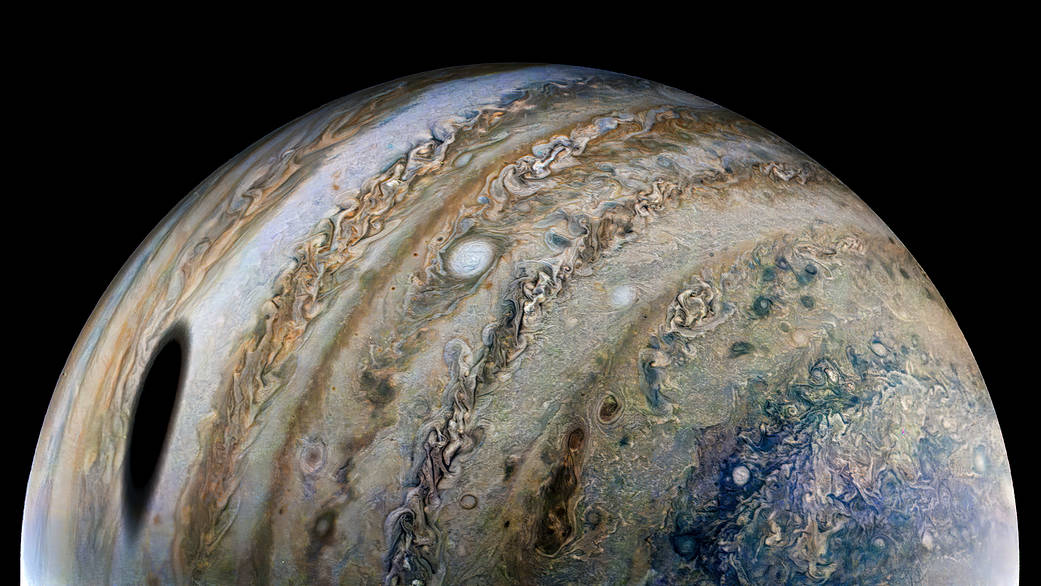The presented image was taken by the Juno probe during its 40th rendezvous with Jupiter, which took place on February 25, 2022. It may seem that a black hole has formed on the surface of the gas giant. But in reality we are observing the shadow of Ganymede.

Ganymede is not just the largest moon of Jupiter, but also the largest moon of the planet in the entire Solar System. Its diameter is 5268 km, which is larger than the diameter of Mercury. It is also the only known moon with its own magnetic field (its intensity also exceeds the corresponding Mercury index). In addition, scientists believe that beneath the surface of Ganymede there may be a vast ocean or even several oceans separated by layers of ice.
The photo was taken at a time when Juno was at a distance of 77 thousand km from the tops of the Jovian clouds. That’s why Ganymede’s shadow seems so great. For comparison, the moon’s orbit passes at a distance of one million km from the gas giant.
If an observer had been in the path of Ganymede’s shadow in the Jovian clouds, he would have seen a solar eclipse. Such events occur much more often on Jupiter than on Earth. Firstly, four large moons (Ganymede, Callisto, Io and Europa) are orbiting the planet at once, which can cover the Sun. Secondly, their orbits lie almost in the same plane as the orbit of Jupiter.
As for the Moon, its orbit is inclined with respect to the orbit of our planet by about 5 degrees. Because of this, solar eclipses do not occur during every new moon, but much less frequently.
According to https://www.nasa.gov
Follow us on Twitter to get the most interesting space news in time
https://twitter.com/ust_magazine

